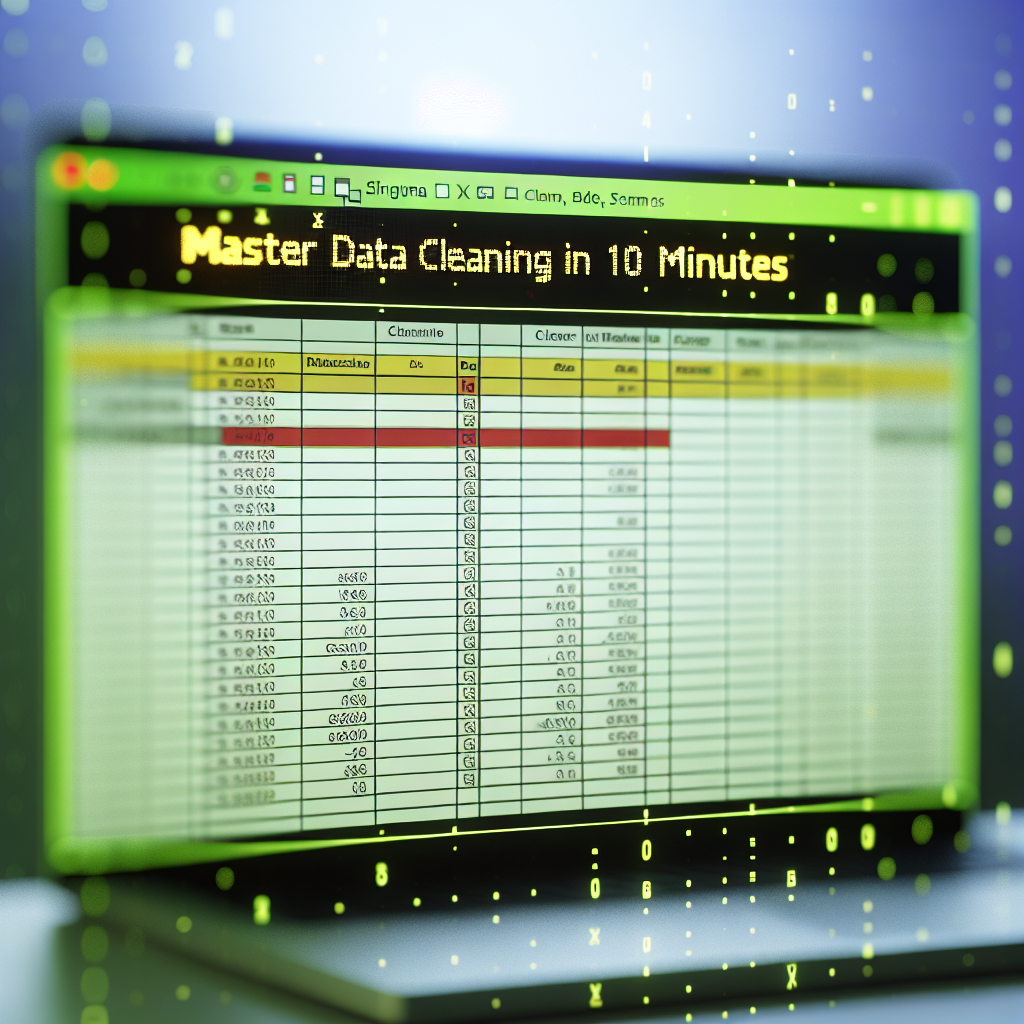Mastering data cleaning in Excel is essential for ensuring accurate analysis and insightful decision-making. In just 10 minutes, you can learn quick and effective techniques to tidy up your datasets, eliminate errors, and standardize your data. This guide will walk you through the most critical steps to transform messy data into a reliable resource.
Efficient Techniques for Data Cleaning in Excel
Before diving into complex formulas or external tools, focus on simple yet powerful Excel features that can drastically improve your data quality. These include removing duplicates, handling blank cells, and standardizing data formats. Using built-in functions saves time and minimizes errors, making the cleaning process faster and more reliable.
Remove duplicates is crucial to prevent skewed analysis caused by repetitive entries. Select your data, navigate to the Data tab, and click ‘Remove Duplicates’. Ensure you select all relevant columns to accurately identify unique records. This step clears clutter and improves your dataset’s integrity with just a few clicks.
Handle blank cells effectively by either filling them based on nearby data or removing them if they are unnecessary. Use the Go To Special feature (F5 > Special > Blanks) to quickly select blank cells, then choose to fill or delete based on your dataset’s context. Proper management of missing data ensures consistency and prevents errors in calculations.
Standardizing and Validating Data for Better Insights
Once your data is cleaned of duplicates and blank entries, focus on consistency through standardization and validation. Uniform data formats, such as dates and currency, are essential for accurate analysis. Use functions like TEXT to reformat data into a standard form, e.g., date stamps or phone numbers, fostering easier comparison and filtering.
Applying validation rules helps prevent future data entry errors. Select your relevant columns, go to the Data tab, and choose Data Validation. Set criteria such as dropdown lists or specific data types to ensure data accuracy at the point of entry. This proactive step maintains data integrity over time, saving you hours of correction later.
Tip: Regularly review your data with conditional formatting to highlight anomalies or inconsistencies. For example, use color scales to identify outliers or data that deviate from accepted ranges. These visual cues enable quick action and ensure your dataset remains reliable for analysis.
Conclusion
In just 10 minutes, you can significantly improve your Excel datasets by removing duplicates, managing blank cells, standardizing formats, and applying validation rules. Mastering these essential data cleaning techniques ensures your data is accurate, consistent, and ready for analysis. With practice, you’ll streamline your workflow and extract valuable insights more efficiently.
